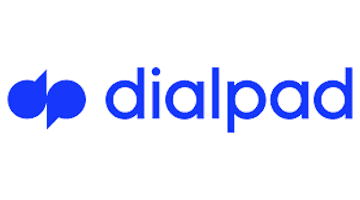If it’s been a while since you’ve considered upgrading to a new business phone system, you’ll find that Voice over Internet Protocol (VoIP) has become the industry standard. Most providers still offer the same great reliable service and dozens of professional calling features like interactive phone menus, company directories, music on hold, extension dialing, and unlimited domestic calling. But when you start getting into more advanced features like voicemail transcription and integrations with other business software tools, the gaps between providers widen.
I spent dozens of hours participating in guided demos, exploring free trial accounts, and using paid services for each of the business phone platforms I reviewed. After narrowing the field to six of the best phone systems, I selected the best use case for each platform to help readers identify the best system for their unique needs. I scored each platform based on its relative cost, ease of use, features, integrations, and customer service for a head-to-head comparison.
What Is a Business Phone System?
The modern business phone system has become more than a telephone. It’s evolved into a unified communications platform capable of delivering high-definition voice, video, chat, and text messages over the internet. Because it is a cloud-based technology, you can take, make, and flip calls between nearly any internet-connected device without letting the caller on the other side know you’re not using a traditional landline system. In addition to the same calling features you’d expect with a business line, these platforms also integrate with other customer-facing tools, like your customer relationship management (CRM) software. With immediate access to your callers’ purchase history, satisfaction score, product preference, and anything else you track in your CRM, you’ll be able to provide a high level of personalized service that will improve customer outcomes.
Compare Our Best Picks
Our Top Picks for 2024 | ||||||
Price | $19.99 | $10 | $13.99 | $19.95 | $23.95 | $15 |
Contract length | Annual or monthly | Annual or monthly | Annual | Monthly | Annual or monthly | Annual or monthly |
Best for | Collaboration | Video conferencing | Add-on tools | Usability | Reporting | Voice analytics |
Free trial length | 30 days | Unlisted | Unlisted | 30-day money back guarantee | 7 days | 14 days |
Rating |
Best Small Business Phone Systems
The Best Picks for Business Phone System
While you can get the job done with any major phone service provider, each one brings something different to the table. See what separates each provider’s features and service with the following pros, cons, use cases, and review scores.
Pros & Cons
Our Review for RingCentral
RingCentral MVP is a business cloud phone system designed to support voice, video, fax, chat, and SMS through a unified platform accessible from any internet-connected device. The platform’s digital workspace serves as a centralized location for team messages, dedicated folders, and shared threads for projects, topics, and teams. The video messaging tool includes features like whiteboards, annotations, breakout rooms, and AI-powered summaries of your meetings to help reduce the barriers between team members working in remote settings. You’ll also find more than 300 native integrations and 2,000 integrations available for customization with the help of a developer.
I think RingCentral is an excellent choice for any business with a significant number of hybrid and remote employees. Its 32 global data centers and direct peering with more than 45 carriers and 200 internet service providers ensure excellent coverage in major business centers around the world.
Pros & Cons
Our Review for Zoom
After participating in dozens of guided product demos from every major business phone provider over multiple years, Zoom has continually proven itself to be the best for video communications. Zoom meetings have clear audio, steady video, and fewer interruptions than I’ve experienced when working with other business phone service providers. With the Business Plus plan, Zoom supports up to 300 participants, up to 30 hours per meeting, and automatically translated captions that make it easy to revisit important details from previous meetings.
As a stand-alone phone service provider, Zoom takes a unique approach to billing with three distinct plans instead of the typical tiers that represent the good, better, and best offerings at the highest price. This includes the pay-as-you-go plan, an unlimited regional plan for the U.S. and Canada, and an international plan with unlimited calling in one of 48 available countries.
While not the right fit for every business, I think Zoom is a great choice for companies that conduct most of their communication over video. As a stand-alone business phone system, it offers all of the essential call-handling features but truly shines in supporting face-to-face meetings from a distance.
Pros & Cons
Our Review for Vonage
Vonage is a united communications platform with flexible add-on features that are simple to set up and easy to use. Few vendors in this category offer stand-alone features as add-ons, instead forcing users to purchase an upper-tier plan to access advanced features like an AI virtual assistant or on-demand recording. Vonage offers 18 paid add-ons that can be applied to any service plan, providing businesses with the option to combine a lower-cost phone plan with a few advanced features at an affordable rate.
Vonage is the right choice for businesses searching for a low-cost, basic business phone system with the option to add a few desirable features to a lower-tier plan. Larger businesses purchasing 20 or more user licenses benefit from additional discounts, bringing the entry-level price close to $10 per month.
Pros & Cons
Our Review for Ooma
Ooma is an easy-to-use phone system that places an emphasis on serving the needs of small businesses. The company’s early beginnings as a consumer-focused product and software provider are evident in its user interface and dashboards designed for nontechnical business owners. Nearly every task related to the setup and management of the platform is easy to manage with drop-down menus to guide users quickly and logically through each step. Unless you’re waiting to transfer an existing phone number, the implementation process takes only a few minutes to complete. For teams larger than five, Ooma recommends reaching out directly for a custom price quote.
I think Ooma is an excellent fit for small businesses searching for a simple phone system that’s easy to use. While it’s missing some of the AI-powered features offered by competitors, Ooma’s emphasis on ease of use makes it the ideal choice for most small and independent businesses.
Pros & Cons
Our Review for Nextiva
Nextiva is an all-in-one VoIP communications platform for voice, video, and chat that’s designed to simplify your business. In addition to the standard assortment of business phone features and reliability that exceeds 99.99 percent, the platform provides real-time call tracking with custom reporting and personalized dashboards. The scheduled reports offered in Nextiva analytics are highly customizable, allowing administrators to designate the appropriate metrics for reporting including time frames, reporting modules, and user access. It’s also easy for stakeholders to monitor phone activity through custom wallboards that provide an instant and shareable view of your call data over a specified period with metrics on total calls, talk time, and toll-free calls.
I think Nextiva is a great fit for larger organizations that can take advantage of the bulk pricing discount and enjoy a reliable all-in-one business phone solution used by phone manufacturers such as Cisco, Poly, and Panasonic. Nextiva is an especially good fit for customer support and sales teams in settings where gamification can be used to drive revenue effectively.
Pros & Cons
Our Review for Dialpad
Dialpad is a modern cloud-based business phone system with an abundance of AI-powered features and tools. The platform’s advanced tools powered by voice intelligence are able to transcribe meetings and calls in real time, take notes on your behalf, collect action items based on your conversation, and automatically send post-meeting summaries. While many of these tools require a middle- or upper-tier plan, some voice intelligence tools, like voicemail transcription, are included with the entry-level plan, even though it’s considered an advanced feature by most other platforms.
I think Dialpad is the right choice for tech-savvy, consumer-focused businesses that already use CRM information and reporting tools to improve their operations on a continuing basis. In this type of office setting, Dialpad can add a lot of value. But if you’re not committed to customer data or implementing time-saving tools, this platform could be more than you need.
Business Phone System Cost
The majority of business phone service providers base their billing structure on user licenses, which you can think of as different phone lines or extensions. With each user license, you’ll typically have access to unlimited domestic calling and dozens of essential business phone features – everything you need for a basic business phone line.
Most providers offer three tiers of service, with added features and costs at each level. Prices for entry-level plans usually start below $20 per monthly user and increase to about $40 for the most expensive plans with the fewest restrictions. Some providers, like Nextiva, let you mix and match plans within your company, allowing you to provide some employees with an advanced calling plan while saving money on other employees who need only an entry-level plan for occasional use. Other providers, like Zoom, offer metered, pay-as-you-go options that start at $10 per month.
Add-ons for stand-alone features in this category are relatively uncommon. Instead, most of the add-on expenses are related to extending the use of features like outgoing SMS/MMS texts or additional toll-free numbers. Add-on prices range from about $5 for another toll-free or international phone number to $0.0085 per message for high-volume SMS. International calling minutes vary widely by country, but many plans include unlimited international calling to specific countries.
Professional implementation is rarely required, but it is available with a custom price quote through many providers. Preconfigured IP-compatible desk phones with LCD screens suited for office use are available for under $100. More advanced hardware designed for executive and high-call-volume receptionists is priced closer to $300. If you want to keep using older desk phone hardware that was designed for landlines, you can likely purchase an IP adapter to connect it to the internet. Most service providers include free mobile apps for Android and iOS operating systems, allowing you to use almost any internet-connected device, like a cell phone or tablet, to take, make, and flip calls.
How to Choose a Business Phone System
1. Determine what you need from a business phone system.
Before you begin scrolling through service providers to explore pricing and features, you need to have a crystal-clear understanding of your communications needs. Start by determining how many phone lines or user accounts you need, take account of your historical call logs with special attention to international calls, and determine how much you’re spending on other communication tools, including video conferencing, team messaging, and SMS/MMS text messages.
2. Research the available providers.
Once you understand your company’s communications requirements, you can begin to narrow down the list of potential service providers. If you haven’t upgraded your phone system in a few years, you may be surprised by some of the modern offerings. Explore the latest articles, like this helpful guide, on business phone systems to determine the best new features, tools, and service providers for your business.
3. Take advantage of free trials and product demos.
The majority of business phone system service providers offer free trials that allow you to fully test their products in a real-world setting. Trial lengths can vary from one to four weeks. If you’re looking for a guided preview, many of the companies are happy to provide you with a live demo to walk you through the product’s key features as well as anything else you’d like to see during your meeting. When available, guided demos typically last about one hour.
4. Ask about pricing by phone.
While you can sign up for a new system online in a few minutes, it may be worth your time to inquire about pricing and any special promotions by phone. This is especially true for larger companies that plan to purchase a significant number of user accounts or phone lines. Many of the companies in this category have robust sales departments with strong incentives to close deals at the end of the month or quarter, which is always a good time to speak to someone in sales.
5. Read reviews.
Now that you’ve narrowed down your list of potential phone providers to one or two finalists, see what other paying customers have to say. Most online reviews tend to speak to the very best and absolute worst experiences possible, so pay close attention to what’s being said consistently to weed out poor information. Do your best to steer clear of reviews much older than a year; otherwise, you could be getting outdated information or hearing about bugs that have already been addressed.
6. Consider starting with a monthly payment plan.
Many of the providers in this category offer monthly and annual payment terms. While it’s usually easy to make changes to your plan, breaking a contract is more challenging. If you have any doubts about your purchase decision, you may want to begin with a monthly plan at a slightly higher rate to make sure the phone service meets all of your expectations before moving to an annual contract.
Methodology
With more than a dozen business phone system providers in the marketplace, which all offer a similar mix of features and tools, it can be difficult to find the ideal solution for your business. I evaluated the field by participating in live guided demos, exploring free-trial accounts independently as part of the review process, and using paid accounts for day-to-day operations, just like any other business would. With strong reliability and call quality available with any VoIP phone service, I focused my attention on price, ease of use, available features, integration potential, and customer service. After conducting my review, I identified six of the best business phone systems and their ideal use case for business owners to consider: Dialpad, Nextiva, Ooma, RingCentral, Vonage, and Zoom.
Business Phone System FAQ
What’s the best phone system for a small business?
Ooma is a good choice for small businesses thanks to its monthly contracts, standard features, and customer support, but that doesn’t necessarily mean it’s the best for everyone. Nextiva is worth considering for its mix-and-match plans across an organization, whereas Zoom’s pay-as-you-go plan might be the best for a small business.
How much should I spend on a business phone system?
You should expect to spend about $20 per person for your business phone system each month. Most businesses will be satisfied with an entry-level plan to facilitate basic communications across voice, video, chat, and text messaging.
How do I set up a business phone system?
Implementation is straightforward with a business phone system. Once you log in with your account credentials, you’ll be prompted to enter key details like your company and personal info. From your dashboard, you can add users, set up your company greeting, record your voicemail message, and start building your call flow. At each step along the way, you’ll find assistance from the installation wizard, which explains each step you’re taking and what you need to accomplish next to finish each task.
Editor’s Pick
- How This College Dropout Raised $29 Million for His Online Education Platform and Landed the Biggest Investor of All — Shaq
- ‘Benign Neglect’ Is a Parenting Style That Makes Children More Confident, Experts Say — Here’s How to Do It Right
- This Former Statistics Professor Has Made Over $1 Million ‘Investing’ in Sports. These Are the 2 Tactics He’s Using to Bet on the Super Bowl.
- The Basics of Writing a Business Plan
- 5 Reasons Why You Should Speak Up More — Especially If You Are a Younger Employee
- Couples Are Borrowing This Strategy From Their Corporate Jobs to Make Their Relationships Better — And It’s Working










